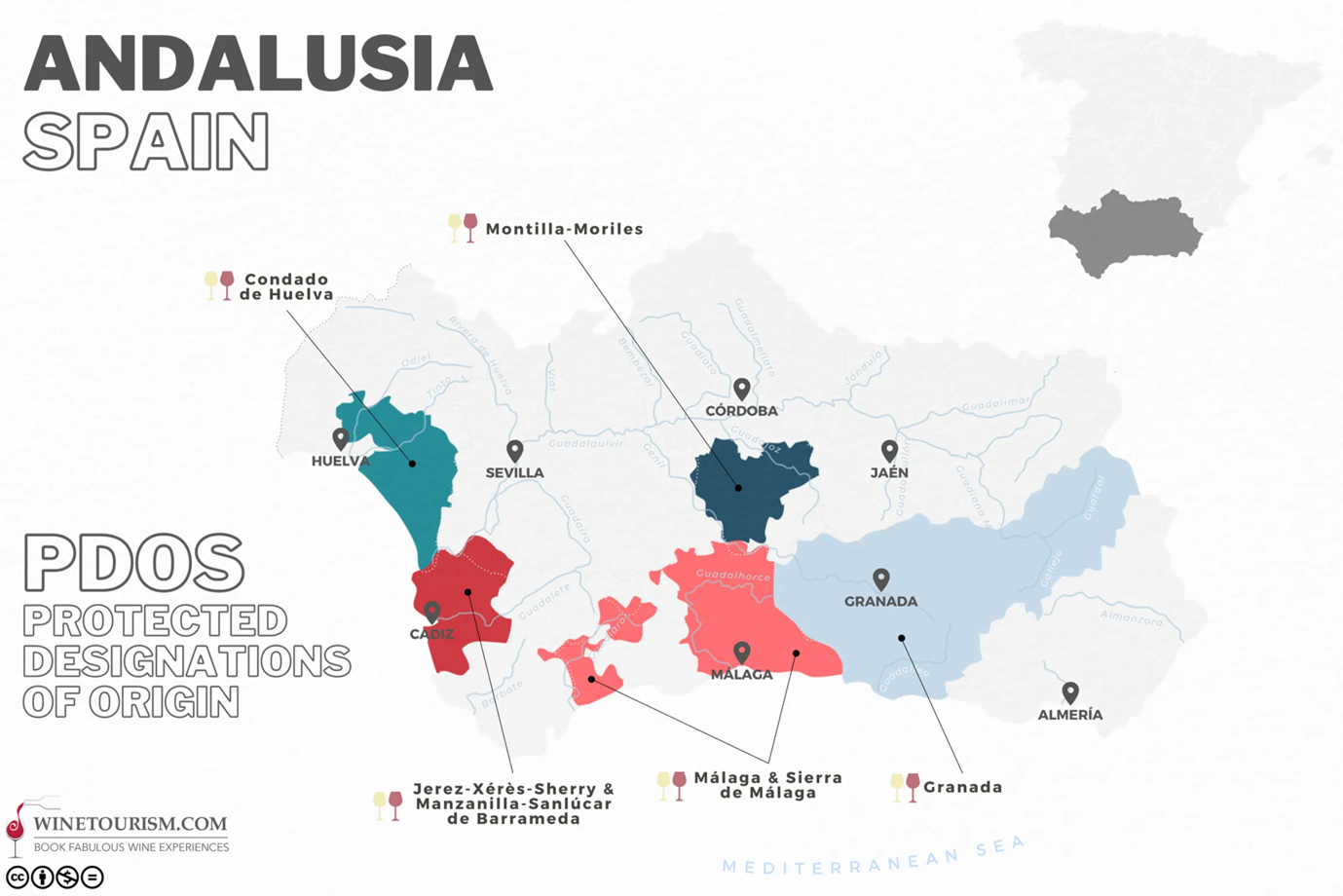Andalusia as the Land of Sherry

Author: Eve Keerus-Jusupov, CEO of Merlis Homes SL.
Helping you navigate Costa del Sol property with confidence and peace of mind.
Have a question? Contact me via WhatsApp
Estonia Has Vana Tallinn, Andalusia Has Sherry
Did you know that Andalusia is best known in Spain’s wine landscape for its sherry production?
Before diving into the details of sherry, let’s take a look at some general statistics about Spain’s wine industry. Spain ranks among the world’s largest wine producers. The country boasts 70 Denominación de Origen (DO) wine regions, producing between 40 and 45 million hectoliters of wine annually. Approximately half of this is exported.
Wine consumption in Spain has been gradually decreasing over recent decades. Currently (2023 data), it stands at around 20 liters per person per year. Spaniards prioritize quality over quantity. For comparison, Europe’s top wine consumers are Spain’s neighbors: Portugal at 67.5 liters, France at 47.4 liters, and Italy at 44.4 liters per person per year.

Exploring Sherry
Sherry (Jerez in Spanish) is made from white grapes and fortified with grape brandy after fermentation, which increases its alcohol content compared to regular wines. The flavor spectrum of sherry is vast, ranging from dry varieties like Fino and Manzanilla to sweet ones like Pedro Ximénez and Cream Sherry.
The history of sherry dates back to the Phoenicians, who brought grapevines from the Mediterranean region to Andalusia around 1100 BC. However, the unique style of sherry as we know it today emerged in the 15th century. Its fame began to grow in the 17th and 18th centuries, largely due to sailors and explorers who introduced it to international markets. Today, sherry is celebrated worldwide for its versatility and unique character in the wine industry.
Famous Sherry-Producing Regions in Andalusia
The most renowned regions are undoubtedly Jerez, Sanlúcar de Barrameda, and El Puerto de Santa María, known collectively as the “Sherry Triangle.”
Finally, here are some useful phrases to blend into Andalusian drinking culture – ¡Salud!
- ¿Qué me recomienda? – What do you recommend for me?
- ¿Qué nos recomienda? – What do you recommend for us? (if with a group)
- ¿Qué tapas recomienda con este vino? – What tapas pair well with this wine?
- ¿Puedo ver la carta de vinos? – May I see the wine list?
- Me gustaría probar este vino. – I’d like to try this wine.
- ¿Cuánto cuesta una copa de vino? – How much is a glass of wine?
- ¡Salud! – Cheers!
- Está delicioso! – This is delicious!
- Un vaso de agua, por favor. – A glass of water, please.
- La cuenta, por favor. – The bill, please!
The Most Renowned Wine Regions in Andalusia

Jerez de la Frontera
The most famous region for sherry production. The primary grape varieties are Palomino, Pedro Ximénez, and Moscatel. Palomino is the main grape used for sherry, providing a neutral flavor base that works well with the solera aging method.
Montilla-Moriles
Similar to Jerez but with a greater emphasis on the Pedro Ximénez grape. This region specializes in sweet wines that are unfortified yet rich in alcohol due to their high sugar content.
DO Málaga
Famous for its sweet fortified wines made primarily from Moscatel grapes. Málaga wines often involve drying the grapes in the sun before fermentation, enhancing their sweetness and concentration.
DO Sierras de Málaga (Ronda Wines)
Ronda wines are produced in the Serranía de Ronda, a sub-region of DO Sierras de Málaga. These are young red wines made from Romé, Cabernet Sauvignon, Merlot, Syrah, Petit Verdot, and Tempranillo grapes. Their white wines include varieties such as Chardonnay, Macabeo, Colombard, and Sauvignon Blanc. Ronda wines pair excellently with local cuisine—red wines with meat dishes and white wines with seafood.
Condado de Huelva
This region produces both dry and sweet wines, primarily using Zalema and Palomino grapes. It is also known for its fresh, fruity white wines.



